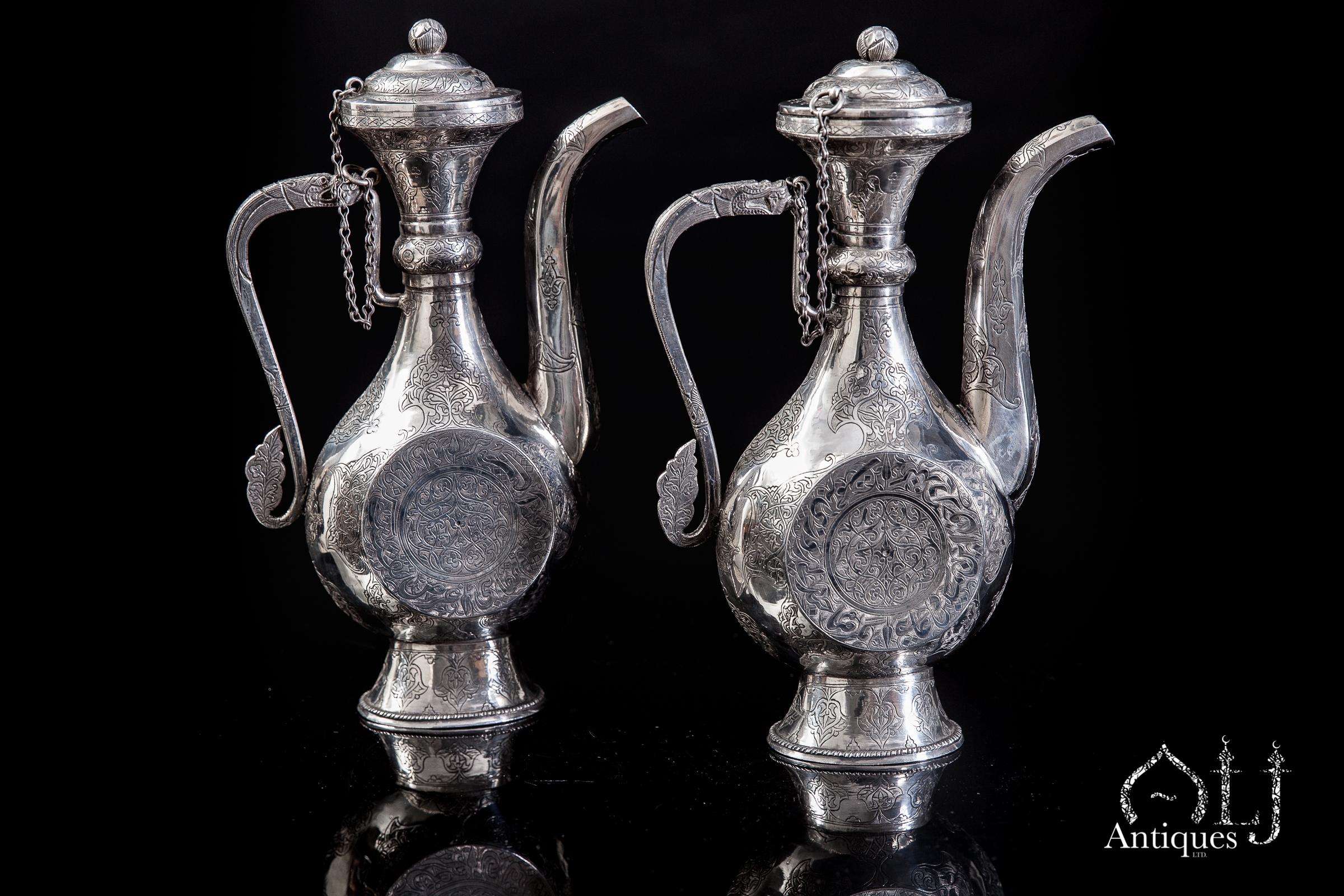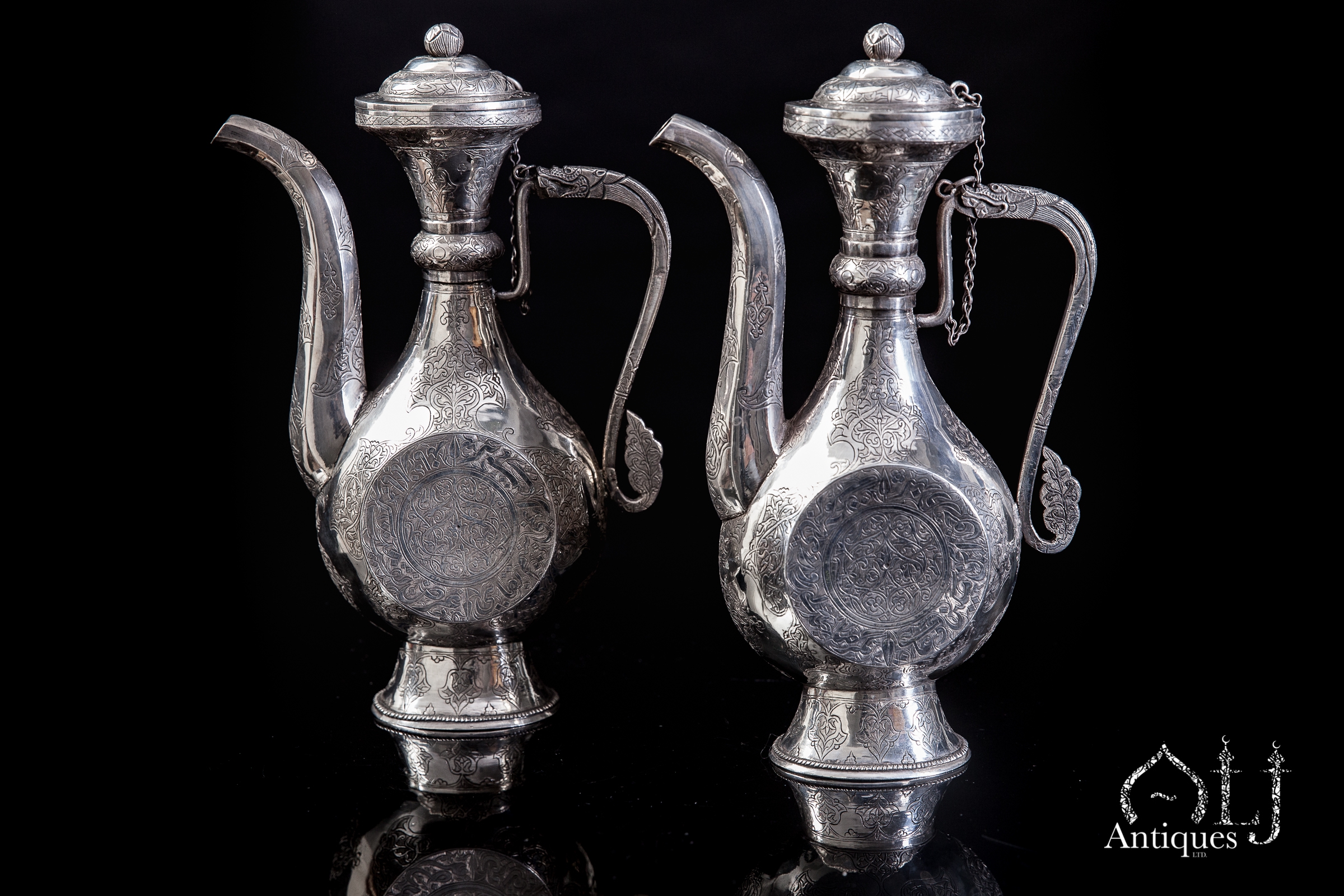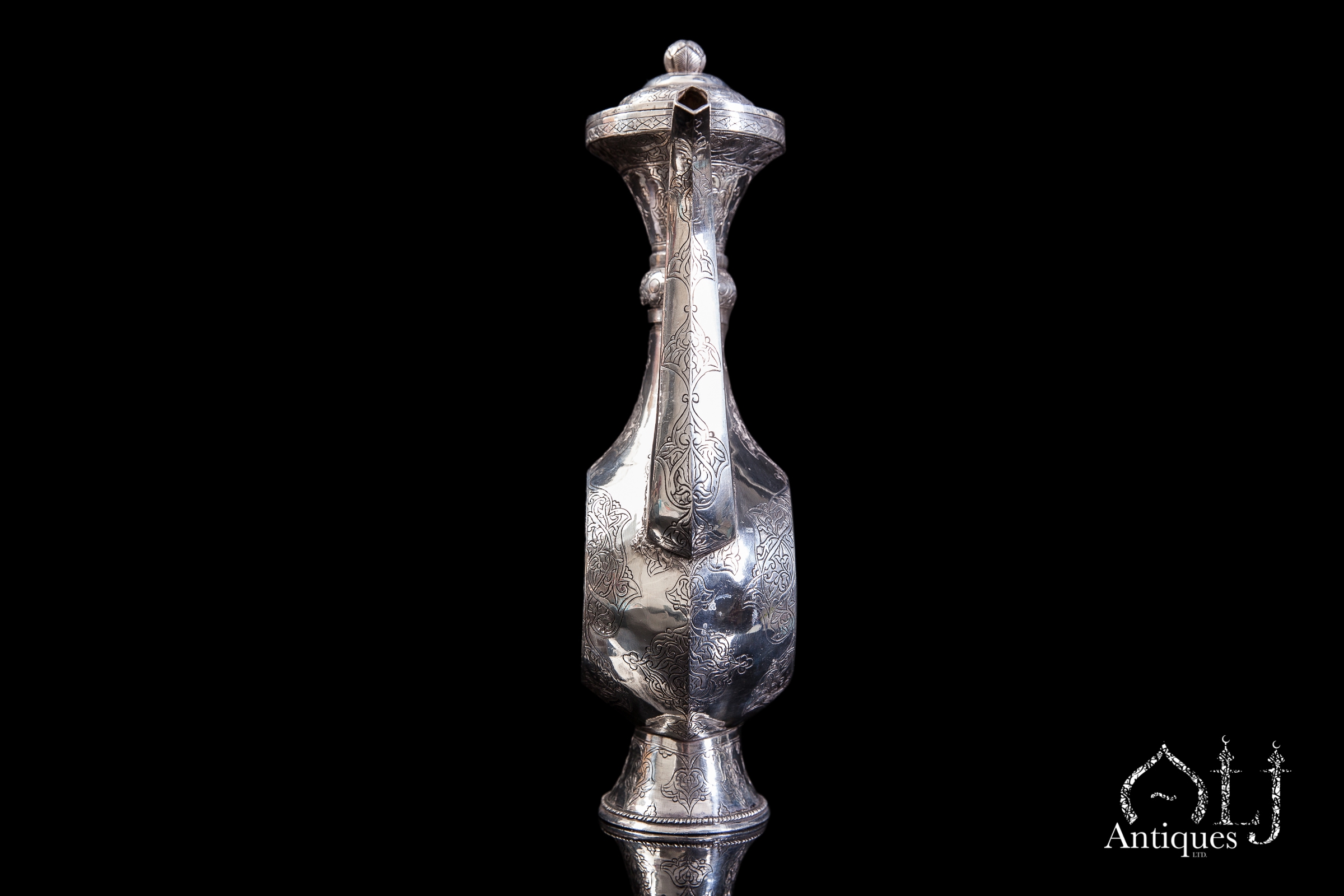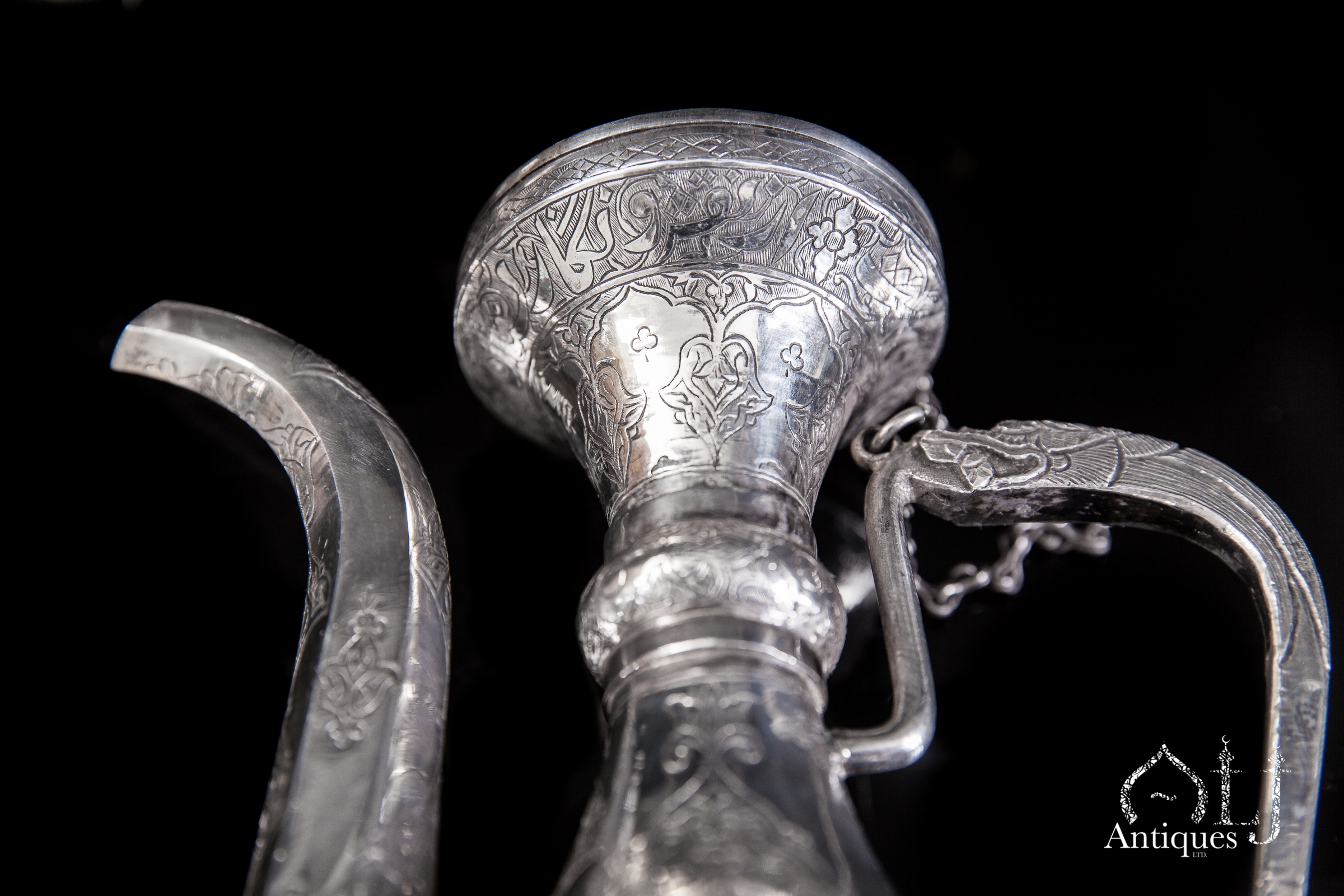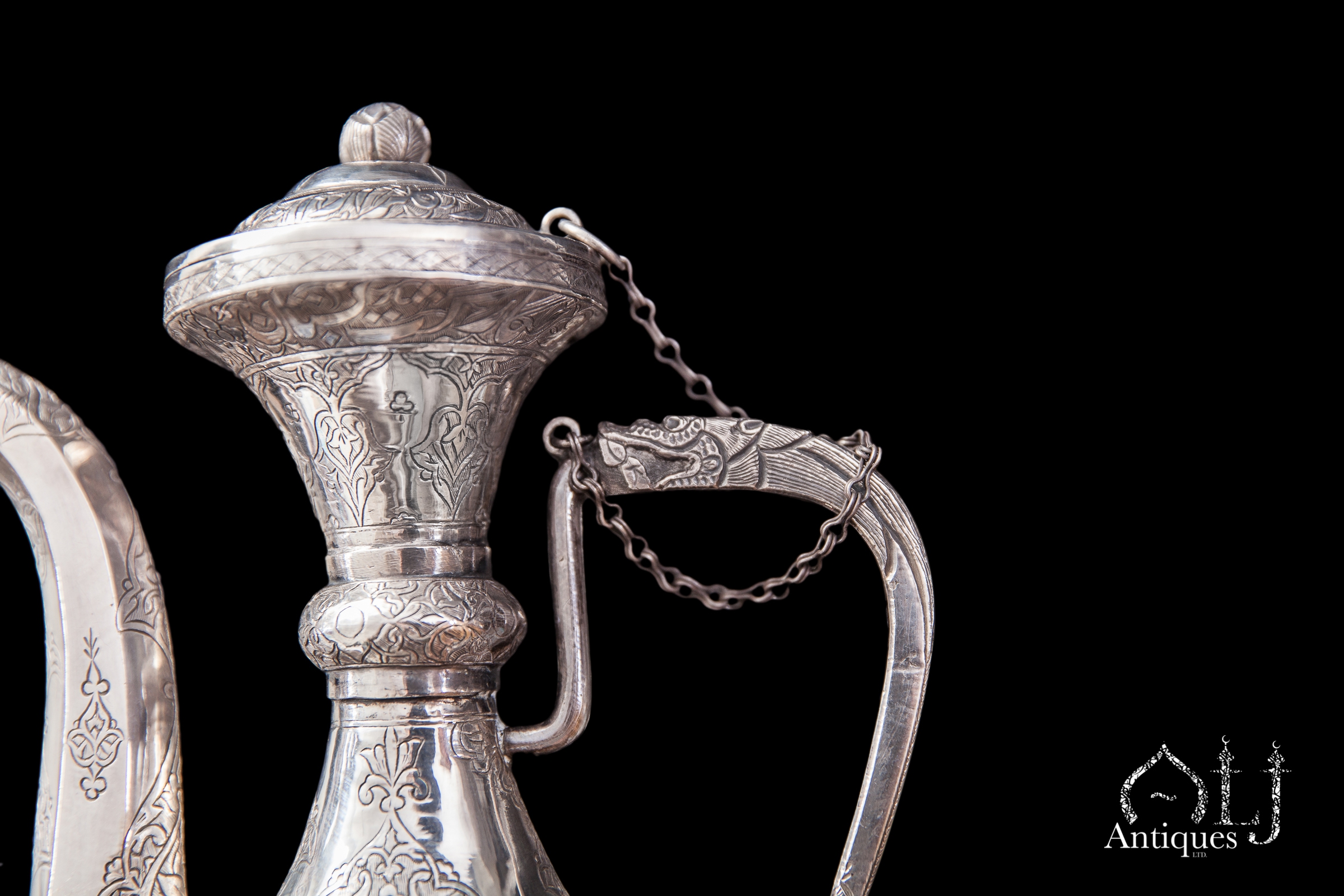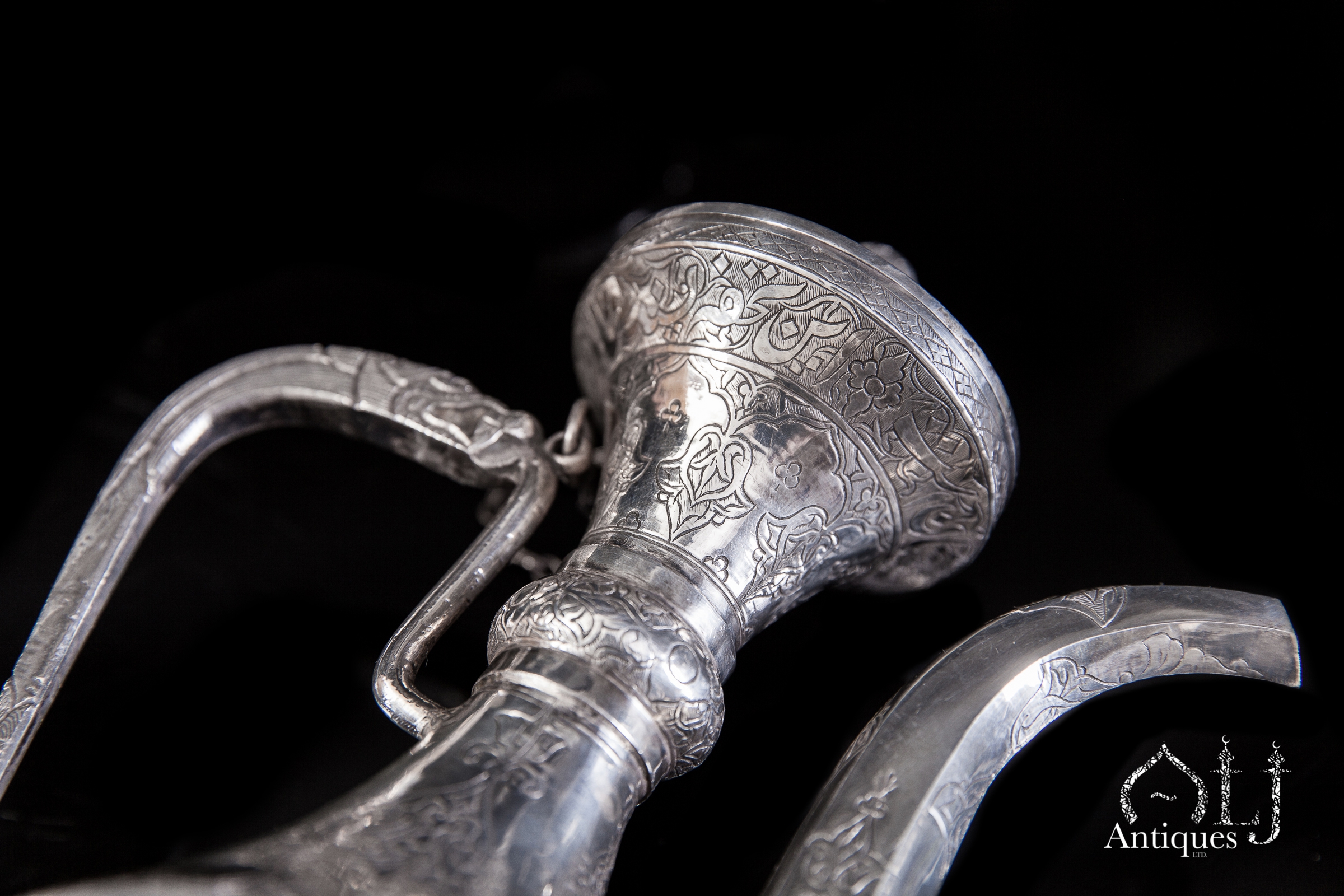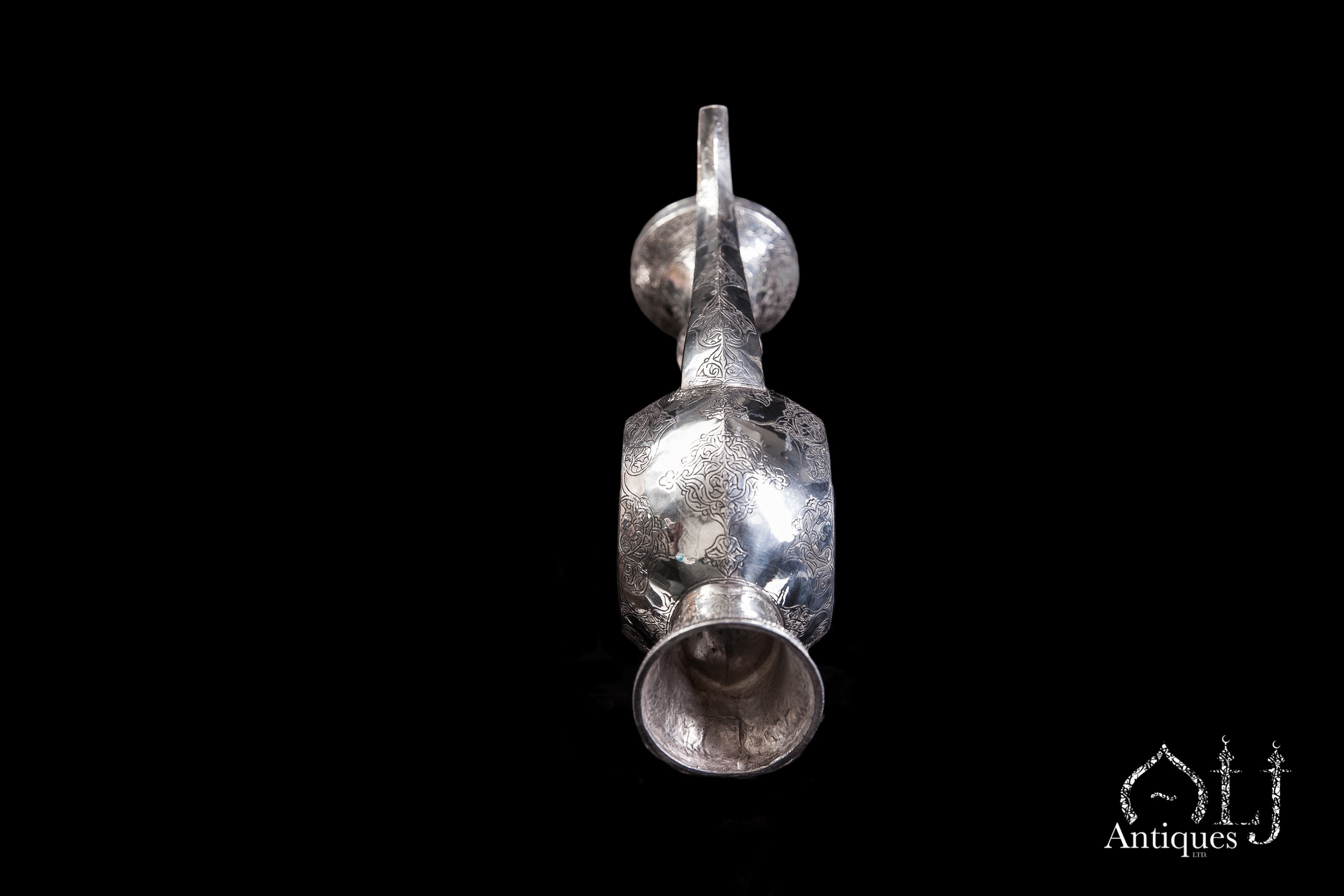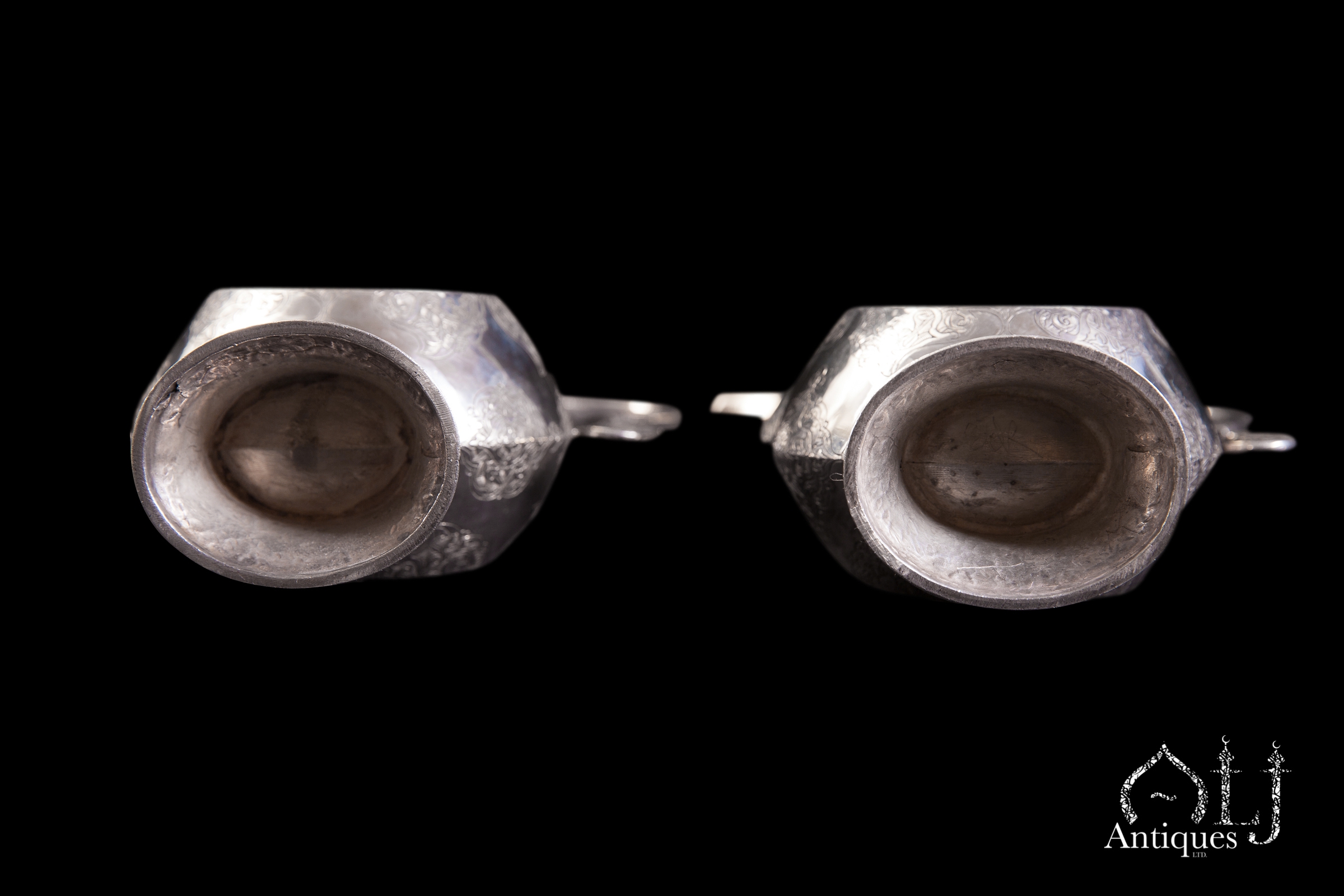Description
Tibetan-Style Ritual Kettle, A Fine Pair of Engraved Silver Lidded Ewers, Decorated with Rumi Style Vegetal Motives & Palmetts, Inscribed with Persian Poem in Nastaliq Script with S Shaped Dragon Handle,Probably Leh-Ladakh,Kashmir India,Circa Late 19th. Century.
This rare pair of Tibetan or Mongolian Buddhist style ritual ewers were probably been made by a talented Muslim faith believer silversmith from the almost 50% Muslim inhabitants of Ladakh, where the rest of the population are of Buddha believers.
The artist is showing his extraordinary skills and talent by using this originally typical Buddha’s shape ewer for a Muslim taste, by using typical Islamic motifs and Farsi Poems.
One poem is attributed to the Persian poet Saadi Shirazi B. 1210 AH,.
The poem is related to the Dervish’s views on life, work and survival.
بماند سالها اين نظم و ترتيب
ز ما هر ذرة خاك أفتادة جايى
“غرض نقشيست كز ما باز ماند كه هستي را نمي بينم بقايى”
مكر در كار درويشان دعايى
Other poem reads as follows:-
مكر صاحبدلي روزي به رحمت
كندر در كار اين مسكين دعايى
Translating to (The Poet or The Maker of this Ewer is describing himself):-
I hope someday, a great man will pray for this poor man.
Other poem reads as follows:-
أين تحفه بود بسند شاهان
أز نقش و نكار كشت بستان
Translating to (The Poet or the Maker of this Ewer is being very Humble by describing this beautiful Ewer).
This gift is not precious but is probably something that Kings might wish to have.
All These Drawings and Writings will Create a beautiful Garden.
This type of ewers is usually used in the Himalayan Tibetan and Mongolian regions in the Buddha’s rituals or for libation purposes and according to the Buddha rituals the ewer is intended for the offerings to the hungry ghosts who have been reborn again.
Or according to the Buddhism teachings this type of ewer is used part of Dharma Protector practice, the Serkem is the drink that protects the deities.
In the Tibetan language Ser means golden and Kem means Beverage.
Each ewer is of a pear-shaped body with a tapering faceted spout with S shaped dragon handle.
In order to secure the lid from not getting separated from the body of the ewer, the domed shaped cover is attached with a chain to the ewer’s body, the lid knob is beautifully engraved in the form of a blossoming lotus flower.

